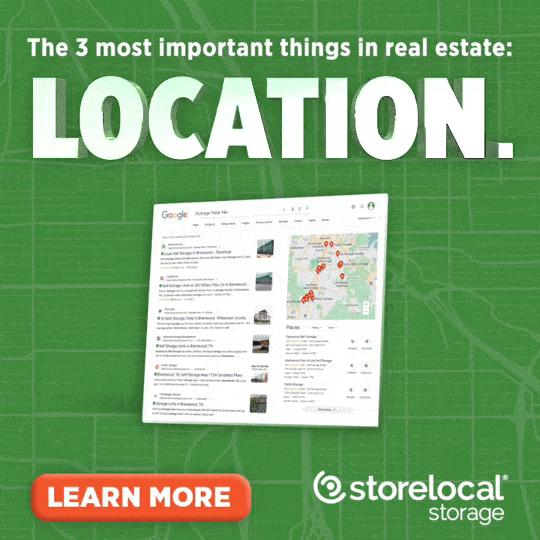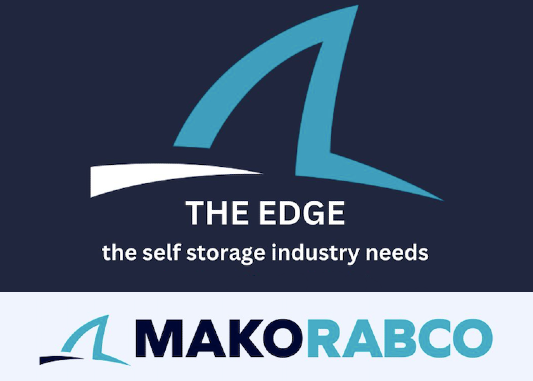The Digital Divide: Hiring, Onboarding, and Training Online
A decade to two ago, managers from Universal Storage Group in Atlanta, Ga., let their feet do the walking when a hiring opportunity presented itself. “We used to visit places where we could find hospitality workers, like hotels,” says Stacie Maxwell, vice president of marketing and training at USG. “Many of our employees came from those kinds of jobs, and that worked for the times. Now, we must meet our prospective employees where they are. Millennials and Gen Z workers are completely online.”
That translates to now letting their fingers do the walking with online ads and networking through social media.
According to Zippia, an online informational career site, a whopping 80 percent of people seeking jobs search online and 50 percent of job applications come through online jobs boards.
Sites Used By Self Storage HR Experts For Hiring
If searching for a job is overwhelming, it’s just as hard for those within the self-storage industry to test what job sites work and when and if to spend money for those listings.
LinkedIn, Indeed, ZipRecruiter and Career Builder are the most popular online platforms, and all have different levels of posting from free to paid sponsorships.
Eric Blum, president of BMSGRP Self Storage Consultants in Coral Springs, Fla., says his company mostly uses free services unless they are seeking more skilled employees. “ZipRecruiter brings back the most qualified applicants,” adds Blum.
Other self-storage companies find Indeed and LinkedIn a better fit. “We can create different qualifier questions for LinkedIn and Indeed that helps us qualify the applicants,” says Jay Catrib, director of business support for National Storage in Farmington Hills, Mich., “If someone doesn’t qualify for the job, applications won’t be submitted, and we can weed those out without ever wasting our time.”
The platform Catrib’s company uses usually depends on the type of job. “Indeed seems to be better to find local talent,” says Catrib. “LinkedIn is a good fit if we’re looking nationally for someone who might want to relocate.”
Catrib adds his company has tried ZipRecruiter. “It gave the same result as Indeed and we determined we really don’t need it,” he says.
When National Storage puts an ad online, Catrib says the company will spend from $150-$300 per month for the ad to help it stay high in search algorithms.
Maxwell says USG has invested its trust in the JazzHR recruiting platform. “That allows us to post jobs, which go everywhere, administer aptitude tests and pass paperwork,” says Maxwell. JazzHR’s website lists subscription prices from $75 - $420 per month.
Maxwell says they will use social media tools as well and which ones depend on the type of employee they are seeking. “If we’re looking for a person a little older with more experience, we will post on Facebook,” says Maxwell. “Gen X are the ones who bridged the gap between offline and online and they tend to stick to Facebook.”
Defining & Writing To Your Audience
Catrib says a couple of decades ago, it was easy to find many applicants qualified for the same position. “Covid changed things and the pool got smaller. It forced us to drive up compensation. Things are getting back to a more normal level pre-covid, still not at the level of two decades ago.”
Catrib says his company will get between 20-120 applicants in major markets. However, finding the best online platform from which to draw those applicants is just the beginning. Crafting the right ad includes giving a full description of the job and main duties, as well as whether the employee will be expected to work weekends, evenings, and holidays.
“We want to make the ad as specific as possible,” says Blum. “We want to make sure what we’re looking for is looking for us.”
Maxwell says writing the perfect job post includes incorporating Search Engine Optimization (SEO) using relevant keywords potential employees may be using. “Millennials and Gen Zs are looking for more flexible schedules and remote work,” says Maxwell. “A lot of operators are now opting for remote, and we can offer that remote option more now.”
Maxwell says they are also mindful in ad wording, crafting ads that are “more inclusive and freer of gender bias.”
Another important aspect, Maxwell adds, is making sure your company is presented well in the ad. “We modernized our brand a couple of years ago and we feel we have a good, positive vibe for the brand itself and that’s really helpful.”
Technology Continues to Assist in Onboarding and Training
Once qualified applications have been forwarded to HR or the direct manager, many companies still want to do the initial interview old school - by phone. “I just want to hear their voice on the phone because so much of the job is still on the phone,” says Carol Mixon, president of SkilCheck in Tucson, Ariz. “So many young people are uncomfortable on the phone, many of them only text, but you still have to talk on the phone in this job.”
A phone interview may also allow the manager to determine if the applicant has the right personality for the job. “The secret is personality,” says Catrib. “Personality is something you can’t train.”
After the initial phone interview, many companies will then go digital again by setting up a Zoom. This format allows more than one manager or trainer to sit in on the interview, but also shows the employee’s digital aptitude.
Maxwell says their system then allows the company to send out the offer, as well as setting up a learning aptitude test. “This helps us determine where their strengths are and what type of training we may have to give more attention to,” says Maxwell. “It also allows us to determine the best way the employee feels comfortable learning. Some people do better reading, some in person, or some online.”
Mixon’s company has long used an operation manual to assist in training, but says it is now offered in physical as well as digital format.
Don’t Discount Old School Hiring Methods!
All our industry experts agree you can draw from a much larger pool of potential employees, but also recognize there isn’t any replacement to good old-fashioned foot work and referrals from current employees.
Mixon says she still is always looking for good employees everywhere she goes. “Sometimes you can’t beat finding someone unexpected in retail shops or even hair salons,” says Mixon.
Zippia cites 30-50 percent of all new hires originating as a referral. As well, hiring an employee based on a referral cost on average $1,000 less than hiring using other methods.
Most companies offer a referral bonus to the referring employee. “We give that bonus to the referring employee after the new hire completes ninety days,” says Maxwell.
Referral fees also help motivate current employees and shows them you value their input, says Catrib. “It helps provide an environment that makes them want to stay with us,” he adds.
Digital technology can also assist in providing appreciation to employees once they’re on board. Catrib says his company uses the Motivosity app, which allows the company to send digital thanks from managers and even the president of the company. “It really means a lot to an employee when they receive a personal note from the president of the company.”
More Content
Popular Posts
The self storage industry is in a precarious...
Like its name implies, Surprise, Ariz., a...
Joe Shoen has had enough.
Joe Shoen, CEO of U-Haul, has had enough.
In a record-breaking deal finalized May 12,...
Senate Bill 709 (SB709) has many in the...
Donald Trump has just reclaimed the White...
Self-storage operators wear a lot of hats....
The question of “abandonment” of stored...
In 1992, Clinton strategist James Carville...
Recent Posts
Occupancy data is arguably the hardest data...
With a commanding presence at 3517...
When Neville Kennard left for a work trip to...
Self-storage software is no longer...
The self-storage industry continues to...
Fires in California. Tornadoes in Kansas....
From policy pivots in Ottawa to tariff...
Self-storage operators have struggled to...























